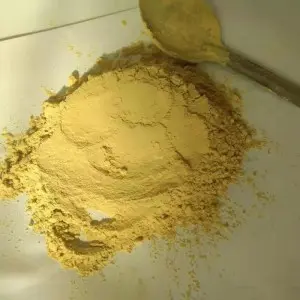Nov . 07, 2024 07:59 Back to list
Collecting Pollen from Apple Trees for Enhanced Crop Production and Sustainability
Collecting Apple Pollen A Deep Dive into the Process and Its Importance
The cultivation of apples is a critical agricultural endeavor that contributes significantly to global food supply and economy. Among the many factors that influence apple production, pollination plays a crucial role. Understanding the collection of apple pollen and its implications is essential for both apple growers and enthusiasts of horticulture.
The Importance of Pollination in Apple Production
Pollination is the transfer of pollen from the male part of a flower to the female part, facilitating fertilization and the production of fruit. In apple trees, the primary pollinators are bees, particularly honeybees. However, to maximize fruit yield and quality, the collection and use of apple pollen through controlled pollination can be beneficial.
Apples are not self-pollinating; they typically require pollen from another apple variety to produce fruit. This concept of cross-pollination not only enhances genetic diversity but also can lead to a more robust fruit set. Growers need to manage their orchards by ensuring that compatible apple varieties are planted in proximity to one another, creating an environment that fosters effective pollination.
The Process of Collecting Apple Pollen
The collection of apple pollen involves several steps, which can be achieved through both natural and manual methods. Here’s how the process generally unfolds
1. Identification of Target Trees The first step is to identify the varieties of apple trees that are being cultivated. It is important to select varieties that have overlapping flowering periods to ensure effective cross-pollination.
2. Timing the Collection Pollination generally occurs during the bloom season, which can vary by region but typically happens in spring. Collectors need to monitor the flowering stages carefully, as the timing of pollen extraction is crucial for its viability.
3. Pollen Collection Techniques - Natural Collection This method relies on bees or other pollinators, but it may not guarantee the desired pollen quality. Encouraging a healthy bee population within the orchard is essential. - Manual Collection Growers can collect pollen directly from the flowers. This requires gently shaking the anthers of flowers to dislodge the pollen or using specialized tools like small brushes.
collect apple pollen company

4. Storage of Pollen Once collected, pollen must be stored properly to maintain its viability. This typically involves placing it in a cool, dry environment, often in airtight containers, to preserve its potency until use.
5. Application of Pollen When the timing is right, collected pollen can be applied to the stigma of flowers on trees that need pollination. This can be done manually or through assisted pollination techniques that are becoming more prevalent due to advances in agricultural technology.
Benefits of Controlled Pollination
Controlled pollination through the use of collected apple pollen offers several advantages. This practice can enhance fruit set, resulting in larger and more uniform apples. It also lowers the risk of poor pollination in years with unfavorable weather conditions that may limit bee activity.
Moreover, the use of specific pollen varieties can lead to the development of apples with desirable characteristics, such as improved taste, texture, and resistance to pests and diseases. As the demand for high-quality apples continues to rise, growers who adopt precise pollination strategies will likely see enhanced productivity and profitability.
Challenges in Pollen Collection
Despite its benefits, collecting apple pollen is not without challenges. Environmental factors, such as climate change and pesticide use, can adversely affect bee populations, thereby impacting natural pollination. Additionally, the need to ensure the genetic compatibility of pollen sources involves careful planning and management on the part of growers.
Conclusion
The collection of apple pollen is a crucial aspect of horticulture that significantly impacts apple production. By understanding the intricacies of pollination and implementing effective collection methods, growers can enhance their apple yields and contribute to the sustainability of this essential fruit crop. As the agricultural landscape evolves, the importance of proper pollination strategies in the cultivation of apples will become even more evident, highlighting the interconnectedness of ecology and agriculture in our quest for food security.
-
High-Quality Oak Pollen for Allergy Research & Testing – Reliable Oak Tree & Live Oak Pollen Supplier
NewsJul.08,2025
-
Premium Pear Pollen for Pollination in Orchards in Taiwan – Reliable Factories, Manufacturers & Suppliers
NewsJul.08,2025
-
Premium Pollen Producer & Apricot Pollen Suppliers High-Quality Apricot Pollen Factories
NewsJul.07,2025
-
Premium Juniper Tree Pollen for Fruit Tree Varieties – Quality Assured by Leading Plum Pollen Manufacturers
NewsJul.07,2025
-
High Quality Elm Pollen Supplier - Fresh Elm Tree & Apricot Flower Pollen for Sale
NewsJul.07,2025
-
Premium Cherry Pollen for Sale – Fresh Cherry & Avocado Tree Pollen Supplier
NewsJul.06,2025